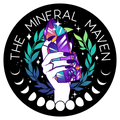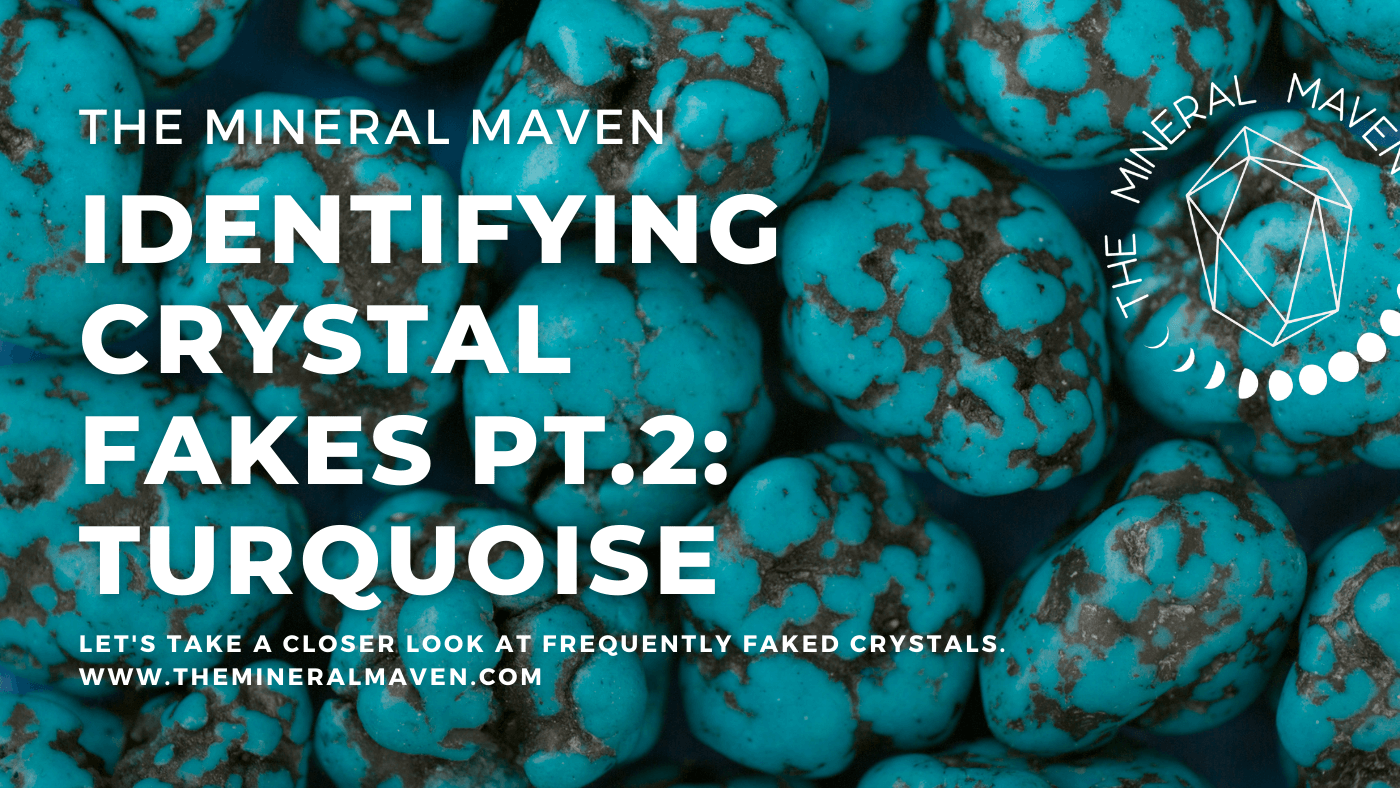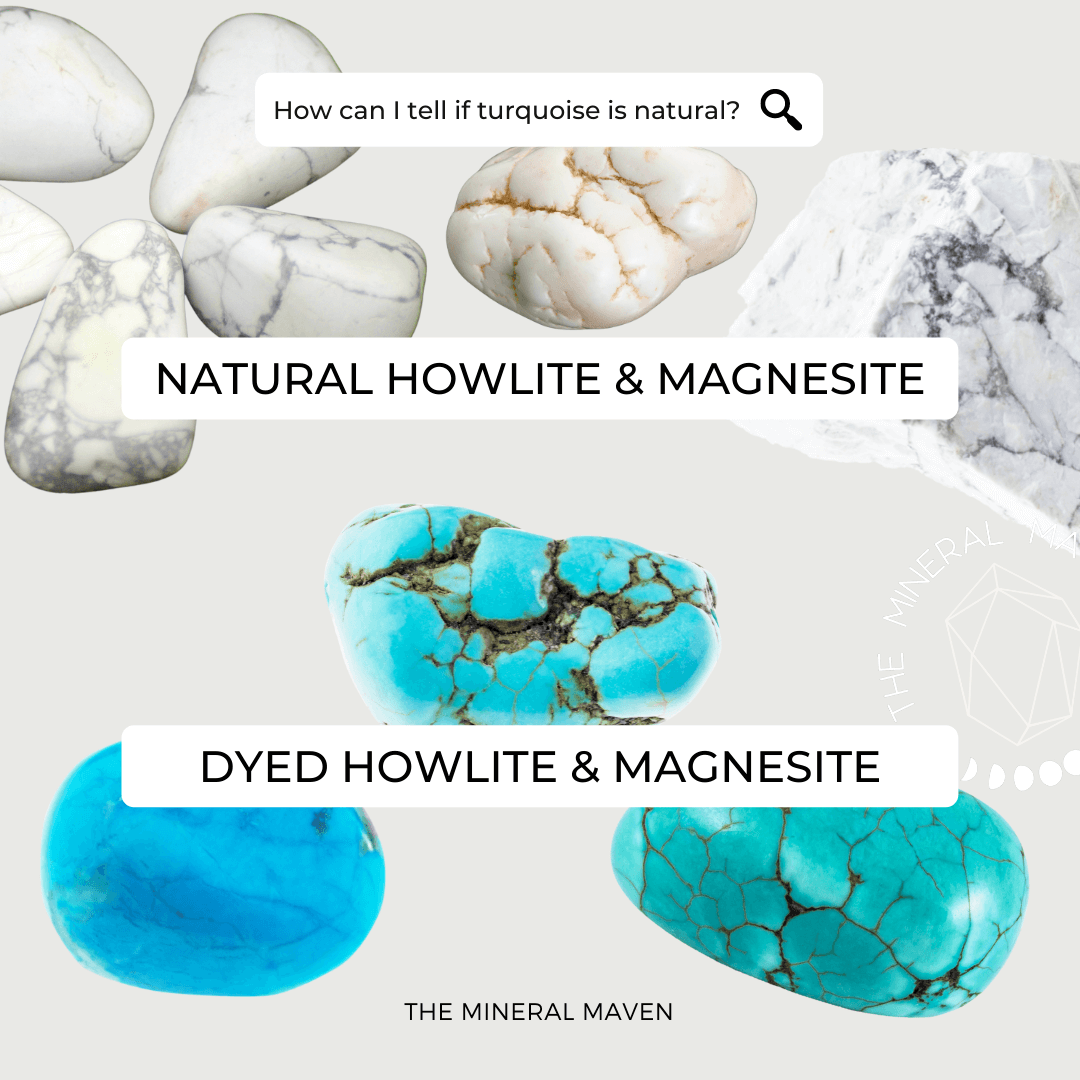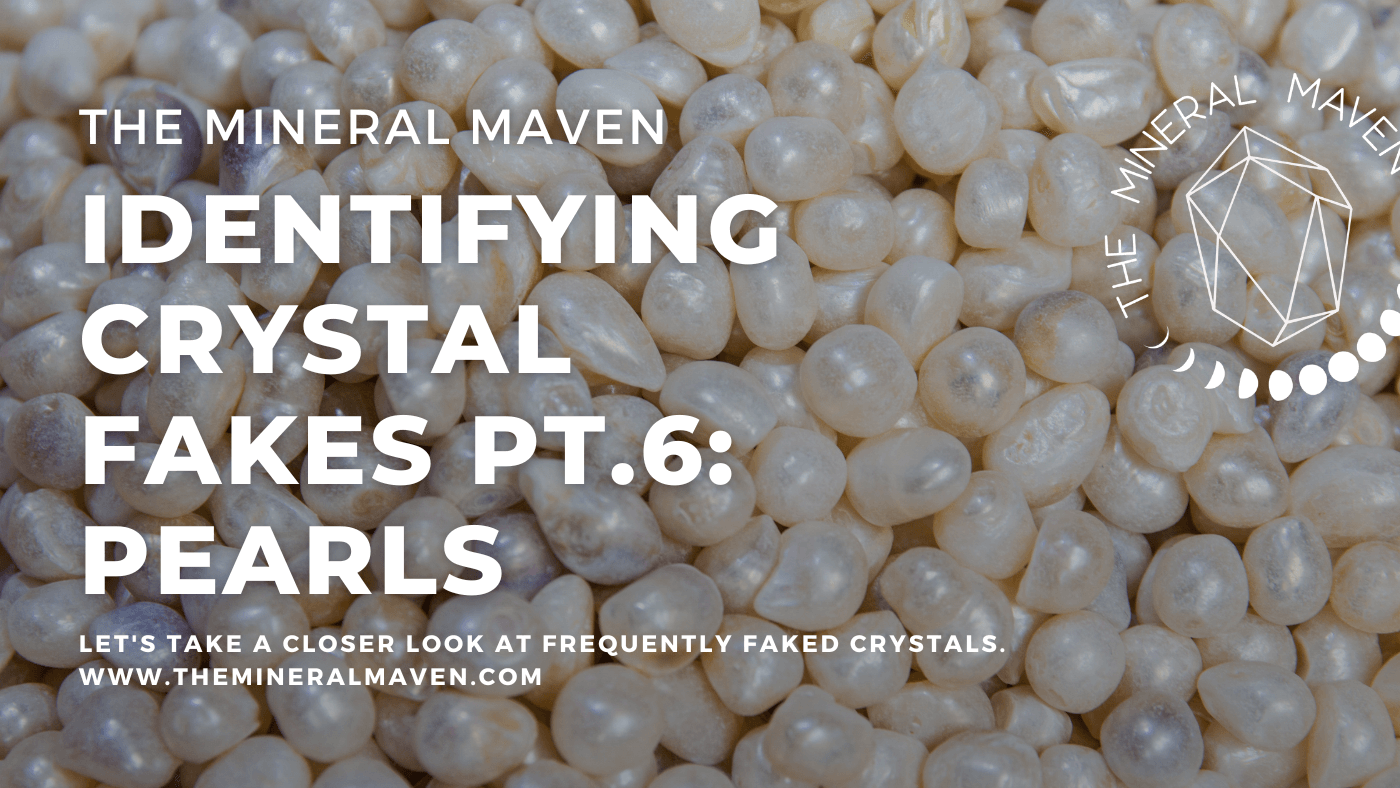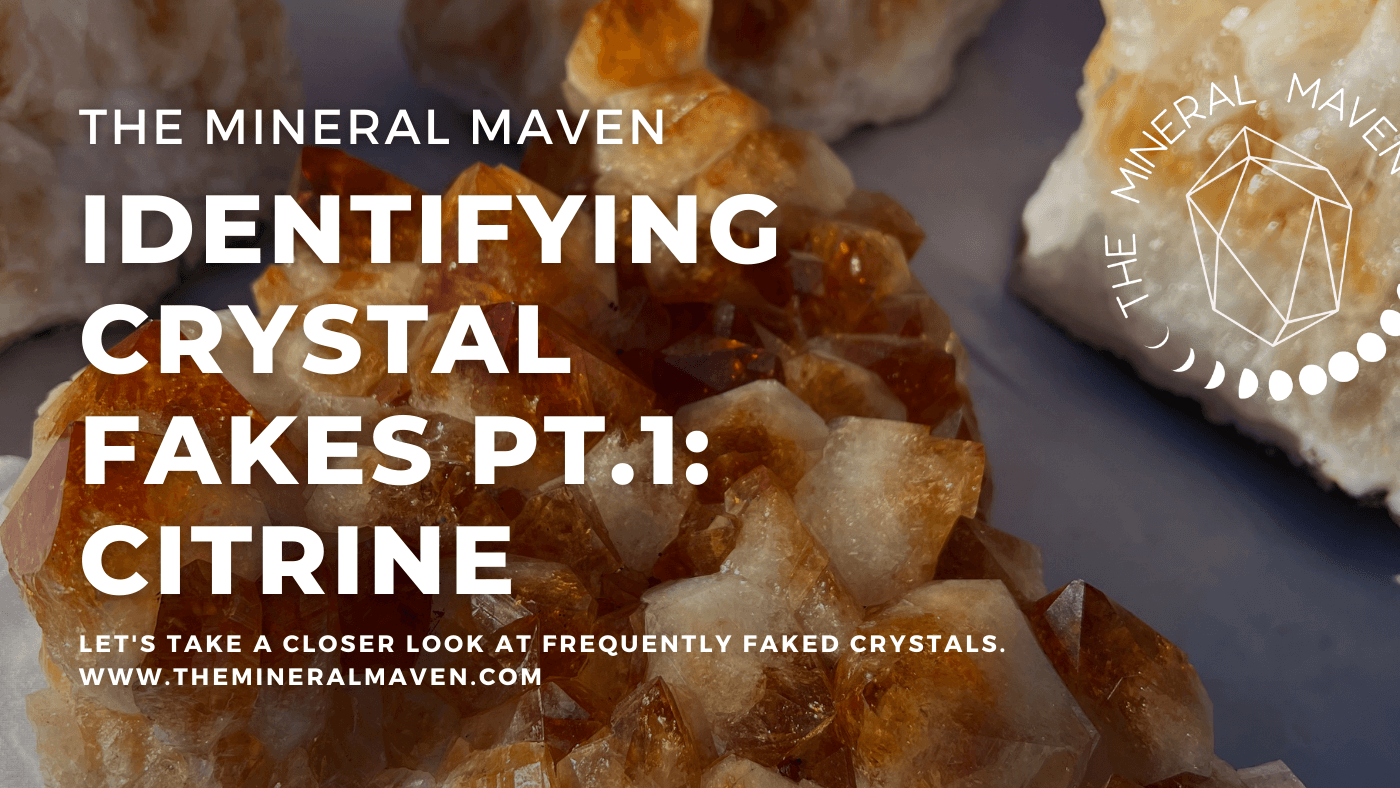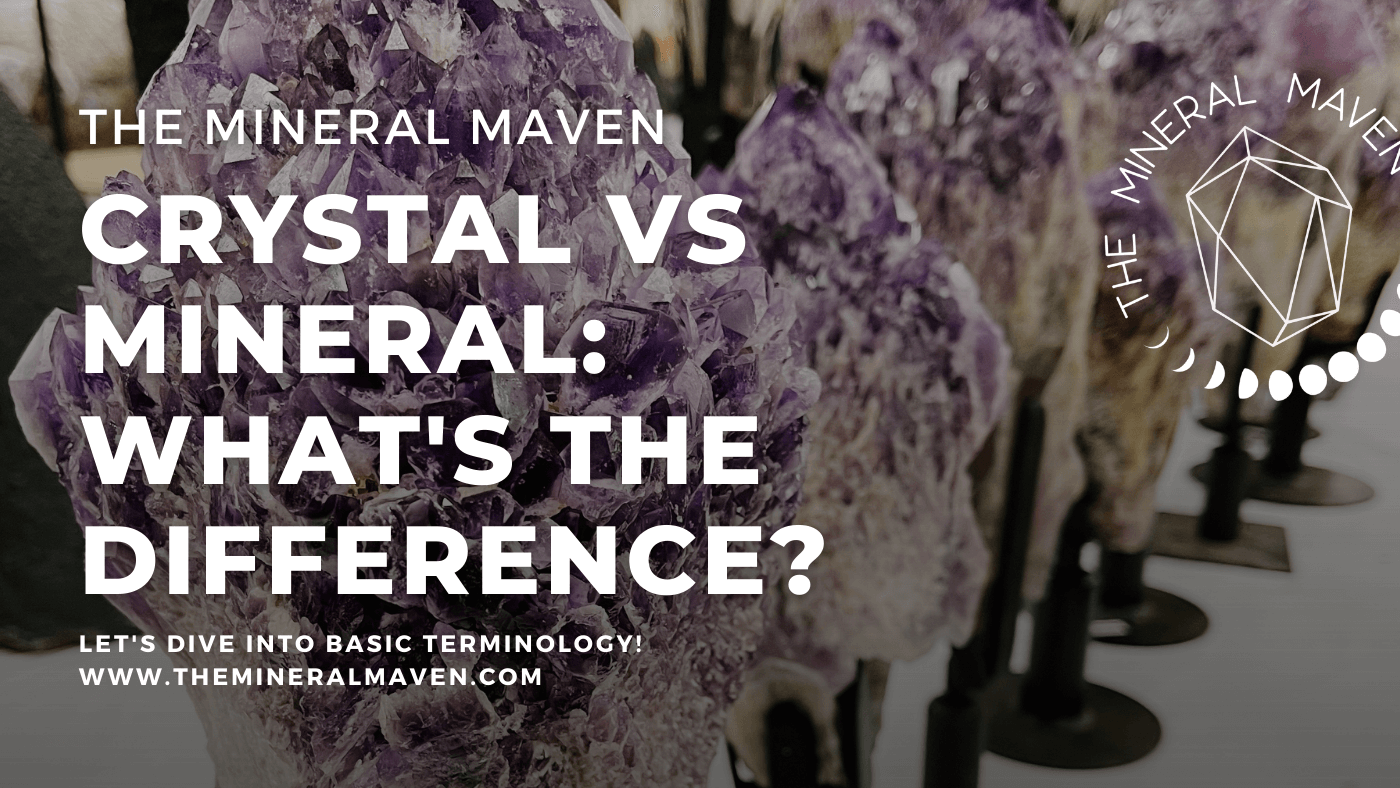Based on the poll I took via my Instagram stories (@themineralmaven), fake turquoise was the next most requested crystal fake for me to cover. I've covered it in my FYI story format in the past, but I think it warrants a permanent home in this blog series. Like citrine, turquoise is another relatively rare (and often pricey) mineral that is frequently faked.
Why is turquoise commonly faked?
Turquoise is hydrated phosphate of copper & aluminum. Natural turquoise is rare, it's "found in only a few places on earth: dry and barren regions where acidic, copper-rich groundwater seeps downward and reacts with minerals that contain phosphorus and aluminum." (gia.edu)
Turquoise has been valued by humans globally for thousands and thousands of years, long prized for use in jewelry and adornments. The finest of turquoise reaches a maximum hardness of 6, with lower grade even softer. Because of this, much real Turquoise on the market is in fact stabilized (which means that it is injected with clear resin to make it harder, easier to cut, and to darken/enhance the color of lower quality turquoise).
I personally have no problem with stabilized turquoise, I've sold it before and it's one of the only ways to make natural turquoise accessible price-wise. Plus, often it has to be stabilized to be cut for cabochons/lapidary. My issue is with howlite, magnesite, and jaspers being dyed and passed off as "turquoise", & powdered stones being dyed, stabilized/reconstituted and cut to be passed off as "turquoise".
As with any identifying of crystal fakes, this topic is deep and complex and can get very specific with techniques used - as manufacturers of these valuable stones are incentivized to make them as realistic as possible. I don't carry turquoise often, but I only buy it from people I trust and typically only from my suppliers based in the US Southwest.
Common turquoise fakes
Dyed howlite
Howlite is a calcium borosilicate hydroxide with a hardness of 3.5 that naturally forms in irregular nodules. It's a chalky white in color with fine grey/black veins in an irregular pattern.
Howlite normally looks like the white stones pictured in the infographic below. The three blue stones featured are dyed Howlite, often marketed as "turquoise". Some sellers are transparent and call it "blue howlite", but many do not indicate that it's been dyed or treated at all. Google image search "blue howlite" or "howlite turquoise" for more examples.
Dyed magnesite
Magnesite is a magnesium carbonate mineral with a hardness of 3.5-5. It can resemble howlite in appearance because they are both white, veiny, porous and very accepting of dye, but they are chemically different.
According to geology.com, "Magnesite dyed a turquoise color has been a disclosed and undisclosed substitute for turquoise for nearly 100 years". Not only is it frequently dyed to look like turquoise, but it is often dyed to resemble lapis lazuli too.
Like howlite, magnesite is relatively cheap, soft, and easy to dye - which makes for an easy turquoise fake.
Why do people dye howlite/magnesite and sell it as turquoise?
For the same reasons any stones are duped/faked - because the natural stone is rare enough to be valuable, and expensive enough to incentivize creation of a cheap substitute that can be passed off as the real deal.
Dying howlite or magnesite is a cheap simulated "turquoise". They absorb dyes well - and sometimes you'll even see howlite labelled as "white turquoise" or "white buffalo turquoise". Dyed red howlite is even sold as red coral sometimes.
Spotting fake turquoise
I'm going to start with the easier visual identification red flags - because these may not work for super convincing fakes, but can help weed out stuff that is noticeably not natural.
And I'll say this - there is nothing wrong with owning dyed howlite/magnesite or fake turquoise! As always, my issue with fakes is when sellers aren't transparent and folks get misled. Transparency is key.
Most fake turquoise can be easily identified via color, matrix, and overall price. Real turquoise isn't cheap. The safest route is to buy it from a trusted source.
- Color - look for color inconsistencies, where dye has collected around lines, or if there are white spots that didn't absorb dye. Also if the coloring/patterning is too uniform/precise, it's a red flag.
- Matrix - some fakes are howlite or magnesite, some are literally plastic or ceramic. So if you run your fingernail over the specimen, then you will feel differences and natural ridges. Fake polished specimens will be smooth. Natural darker crevices will feel different, while dyed "crevices" will feel uniform with the rest (sometimes dyed or reconstituted specimens will be tumbled with darker dye to mimic the crevices on natural turquoise).
- When in doubt, ask questions! Of course, the seller could lie (and they do), but you can always ask where the turquoise is from and then look up photos of turquoise from that region to see if it checks out. Proud authentic dealers will be excited to talk about the locality of their turquoise (e.g. Kingman turquoise from Arizona or Sonoran turquoise).
How to test a suspected fake
Spotting a fake turquoise can be a challenging task when you have a really convincing specimen. Dyed magnesite nuggets can look so similar to stabilized turquoise nuggets.
If you want to get real about testing a specimen you think may be howlite or magnesite or completely reconstituted (dyed powder that is reassembled with resin), you can use a few different tests:
- Slice it - cut the specimen to see if it's white on the inside. Dye won't permeate the entire stone.
- Needle test - get a needle hot in a flame and then poke a crease to see if it smells like plastic (resin). Reconstituted specimens will melt and real turquoise will burn.
- UV light - turquoise containing resins will fluoresce. Of course, natural stabilized turquoise often contains resin! So this won't necessarily rule out that it's natural.
- Scratch test - because it's a 5-6 on the hardness scale, scratch it with a steel knife. Under magnification, the edges should look tattered. If they're smooth, it's not real.
- Acetone (nail polish remover) - a small piece of white cotton or toilet paper can be used to rub on a small spot. If the material is dyed, it will likely rub off onto the acetone-soaked material and leave a blue spot. It can also remove stabilizer agents and leave that spot chalky-looking.
Please note that many of these tests would damage your specimen and please be safe if you choose to conduct any of them.
I hope this is a helpful place to start when endeavoring to avoid fake turquoise. Please don't hesitate to drop questions below if there's anything else I can clarify for y'all, and subscribe to my newsletter (website footer) so you don't miss Crystal Fakes part 3!
